Selsey's D-Day Tanks and Bulldozers
These Second World War armoured vehicles off Selsey Bill are the first vehicles to be given Scheduled Monument Status, the hard work and perseverance from local diver and wreck expert Alison Mayor. In 2008 a team of divers from the internationally renowned *Southsea Sub-Aqua Club surveyed the wreck site.
Here Alison Mayor shares what she and the team found.
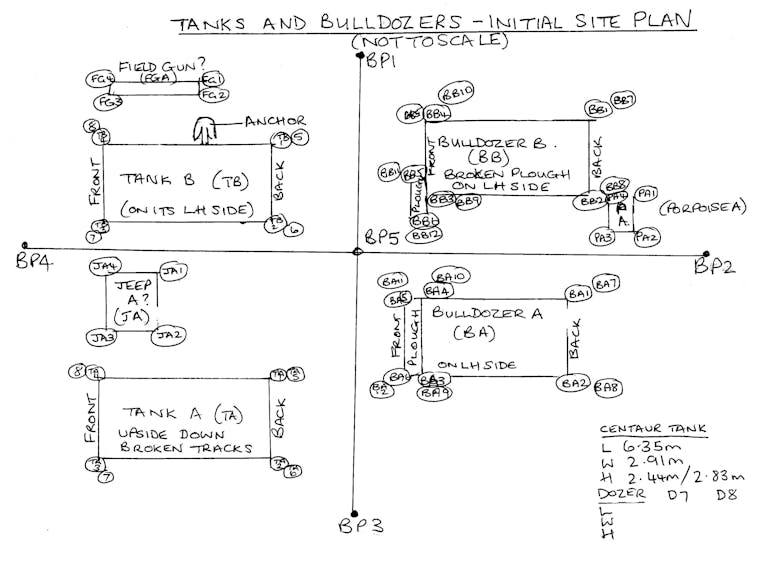
5 nautical miles (9.4Km) SSW of Selsey Bill at a depth of 20m lies the wreck site of WW2 armoured vehicles that were destined to be part of Allied Forces D-Day Landings. The two tanks and two armoured bulldozers that sank to the bottom of the sea when their Landing Craft capsized on the morning of 6th June 1944. These impressive and unique fighting machines were part of the Canadian and British “J Force” headed for Juno beach on the Normandy coast.
In 2008 a team of divers from Southsea Sub-Aqua Club surveyed the site to understand more about these historic war machines and find out more about how they had sunk to the bottom of the sea. The historic WW2 armoured vehicles and gun lie jumbled up on the sea bed at a depth of 20m but there was no evidence of a shipwreck nearby.
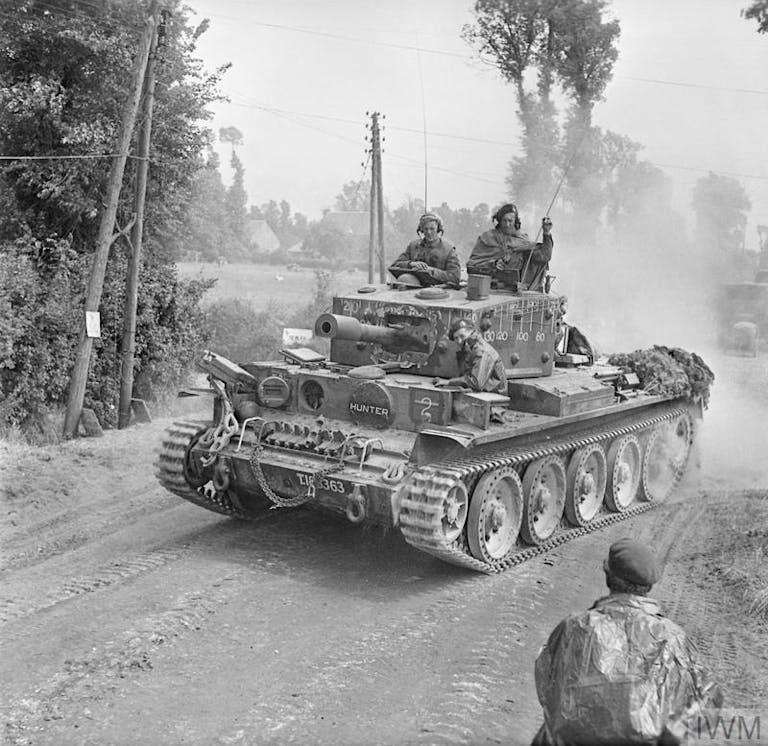
The wreck site held many clues and as a result of their investigations and painstaking research the divers identified the tanks as British Centaur CS IV used exclusively by the Royal Marines Armoured Support Group, specifically for Operation Overlord.
As part of the first wave of invading forces the Centaurs would aim their powerful 95mm guns from the Landing Craft Tank (LCT) to fire at enemy gun positions on the approach to the beach.
A total of 80 Centaurs were to be used on D-Day but only a small number made it across the English Channel and until now only 2 were believed to have survived as war memorials in Normandy. One Centaur tank stands as a war memorial at the famous Pegasus Bridge in Normandy.

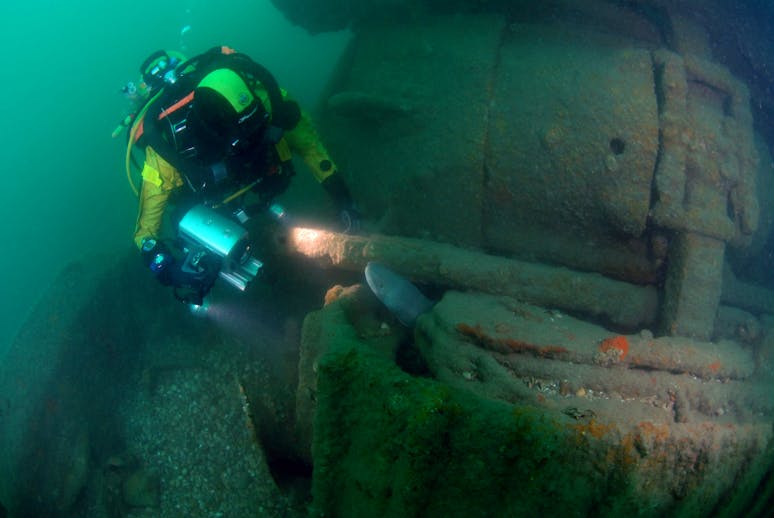
The bulldozers are also believed to be very unusual, in that they were specially armoured Caterpillar bulldozers, one of a series of modifications to different types of war equipment known as Hobart’s “Funnies”.
This type of armoured bulldozer was used by the British Army 79th Armoured Division and Royal Engineers to clear obstacles from the beaches.
Little is known about the modifications made and there is only one known surviving bulldozers of this type.
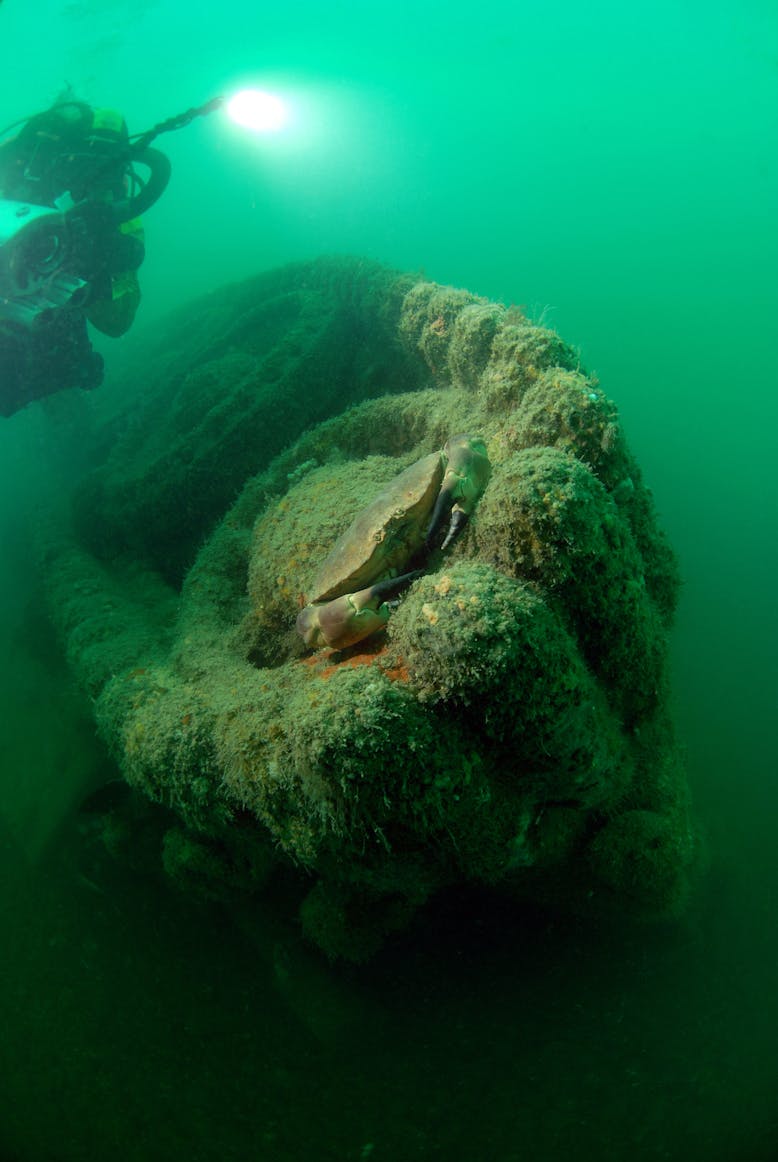
The survey revealed a number of other surprising discoveries - a large ‘Kedge’ anchor, tucked just beneath a tank, 2 ammunition sleds, 2 propellers and ammunition were amongst the many additional items found at the site.
These items and much research into the Royal Marines War Diaries have led to the mystery finally being solved.
The historic War Diaries for 2nd RM Armoured Support Group, who took part in the D Day landings at Juno Beach supporting Canadian forces, confirmed that one LCT was forced to turn back half way across the Channel after engine trouble and reported 2 Centaurs as being lost at sea.
The weather was very bad during the crossing and a further Naval War Diary entry confirms that the same LCT capsized whilst under tow. All crew and RM personnel were rescued.
The following year Southsea Sub-Aqua Club located the wreck of the Landing Craft Tank (LCT(A)2428) several miles to the east of the Tanks and Bulldozers site.
The historic importance of this and several other D-Day related wrecks in the area was recognised by Historic England in 2019 as part of the 75th anniversary of Operation Overlord and D-Day.
The wreck site was protected as a Scheduled Monument and can be visited by divers on a strict ‘no touch – no take’ basis.
The unique site is a relatively easy dive as the tanks and bulldozers are no more than 5m apart in a shallow scour.
The individual vehicles are home to many different types of marine life including crabs and lobsters, conger eels, colourful wrasse and shoaling fish and delicate sponges.

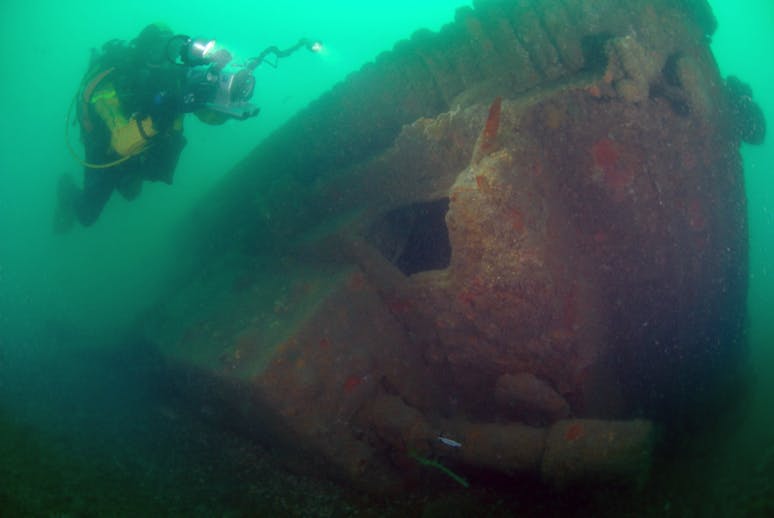
For more details on this and other D-Day wreck projects along the south coast and also in Normandy, visit Southsea Subaqua projects page.
Images on this page are courtesy of Martin Davies Day.
*Southsea Sub-Aqua Club is internationally renowned for discovering the resting place of Henry viii warship The Mary Rose amongst other projects.

